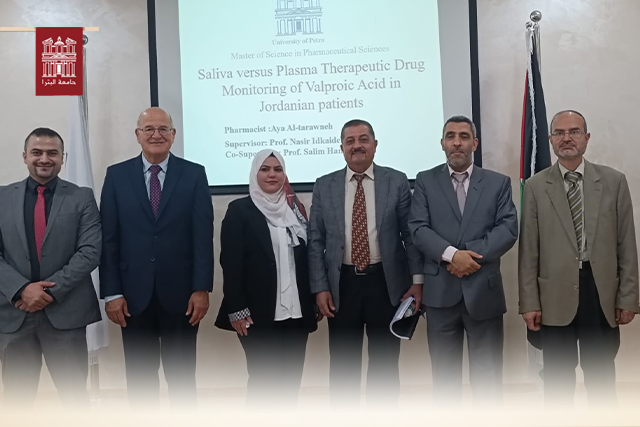
A scientific study at the University of Petra indicated that saliva samples can be used as an alternative to plasma samples in monitoring therapeutic drugs for valproic acid. The saliva in the therapeutic drug monitoring is non-invasive, less dangerous and more tolerable for patients than the plasma in the therapeutic drug monitoring of valproic acid.
Aya Al-Tarawneh obtained her Master's Degree in Pharmacy from the University of Petra. Her master's thesis is titled "Saliva vs. Plasma Therapuetic Drug Monitoring of Valproic Acid in Jordanian Patients" which took place at Al-Bashir Hospital.
The viva committee consisted of Prof. Nasser Dkaidak, Prof. Salim Hamadi, Prof. Riad Awad, and Prof. Mayyas Al-Rimawi from the University of Petra, and Prof. Mutasim Al-Smadi from Jordan University of Science and Technology.
The study aimed to determine the feasibility of using saliva samples as an alternative to plasma samples for valproic acid treatment by adopting an observational design in the study.
The study was conducted on 23 patients. Samples were collected at the highest concentration and lowest concentration in oral saliva and plasma for valproic acid for comparison.
Therapeutic drug monitoring is a practical tool to ensure that drugs are prescribed and administered according to safe doses and for the purpose of achieving desired therapeutic effects for patients as there are several ways to do it.
The results of the study indicated that there is a significant link between saliva and plasma concentrations. Creatinine clearance was significantly associated with maximal plasma levels of valproic acid. Albumin was also significantly associated with plasma valproic acid levels. No other significant relationships were found between valproic acid concentrations and sociodemographic characteristics.